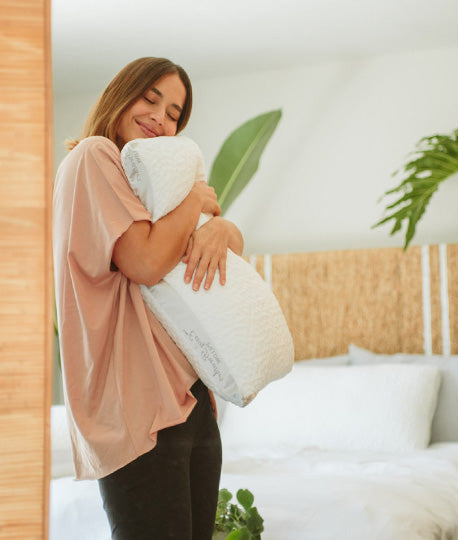Just because there are many mattress brands doesn't mean there are many types of mattresses. To the average consumer, mattress shopping can be quite overwhelming because of the multitude of choices. However, understanding the basic construction of mattresses can help you narrow down your choices and pick the type that best suits your particular needs.
Though there are many brands, there are only a few ways to make a mattress, which we have discussed here in the blog in the past, but for the sake of review, they are:
- Some type of foam on top of pocketed coils
- Some type of foam on top of contiunous coils
- Some type of foam on top of a firm base of foam
- and there is the rare water bed and air mattress
Once you identify the few ways a mattress is made, you can narrow your search further by choosing the best type of surface for your particular needs. In my professional opinion, water and air are a completely waste of your money. Sleep Number is a prime example, as it is nothing more than an air mattress, and air and water both do a very poor job of supporting your back. Both air and water displace with mass, the heaviest part of our body is the middle and thus air and water beds will not support the proper curve of your spine, despite what their marketing might say.
So, that leaves us with foam on foam, foam on pocketed coil and foam on continuous coil. Of those three options there are two types of foams: Latex and Synthetic foam. And regardless of what you might read on some other sites, those are the only two types of foams currently available. Now, there are mixtures of the two: Latex with some synthetic content, and Synthetic with some natural content.
Rubber, or Latex, is springy. It is after all, rubber, and that is the natural characteristic of rubber. Synthetic foam, more commonly known as Memory Foam, is better at energy absorbtion, better than rubber, which deflects energy.
Now that we have narrowed down the types of beds out there, what is the best surface to sleep on? Any surface that cradles the natural curvature of the spine and does not diminish blood circulation and allows for heat dissipation. With that in mind, let's look at what is best.
A zoned pocketed coil mattress is, in my opinion, one of the best surfaces to sleep on due to its ability to contour and cradle the body, not put too much pressure on the skin and joints while allowing air to flow all around the top. As for what material is best atop the zoned pocketed coils, a non-toxic synthetic foam will absorb energy better than a latex, but a latex foam can be natural and have no synthetic content. As long as you have the supportive and cradling base of zoned pocketed coils, either material would suffice to support properly, it just comes down to personal feel and personal choice as to the type of material you want to sleep upon.
Next would be an all synthetic foam matress. This type will not have as much air flow as the pocketed coil due to the base being solid foam, but that does not necessarily mean it will sleep hot. Not all foams are created equal, and that means some are denser than others, the denser foams restricting air flow and are not good at allowing heat to dissipate. A less dense foam has more breathable spaces inside the foam, in the form of larger pores, allowing more air flow. The solid foam works well because it is dense, preventing the middle part of your body to sink too much, while providing excellent pressure relief.
A solid latex foam, on the other hand, is a flat surface, and while it gives, the rubber deflects the body's weight right back at itself, creating pressure points. A flat surface cannot yield evenly to the curves of the body, thus putting more pressure on parts that are pushing deeper into the surface, such as the hips and shoulder when laying on your side. A softer latex merely sinks more, allowing the center of the body to sink deeper than the rest of the body.
Last is a continuous coil type of mattress. These tend to be very firm and flat, which, some people like, but it is not the best for supporting the curves of the spine.
Hope this helps in choosing the type of mattress you need for your body type and comfort.





